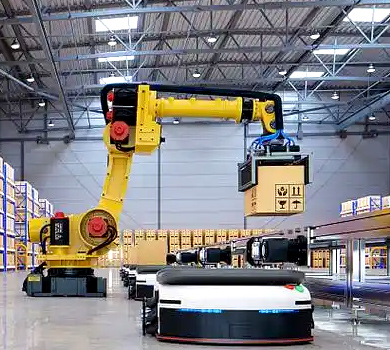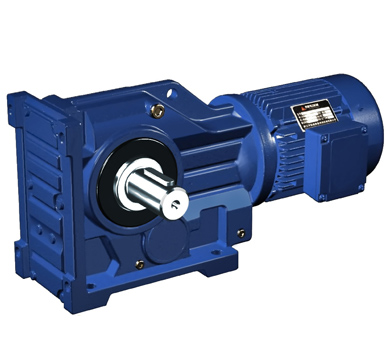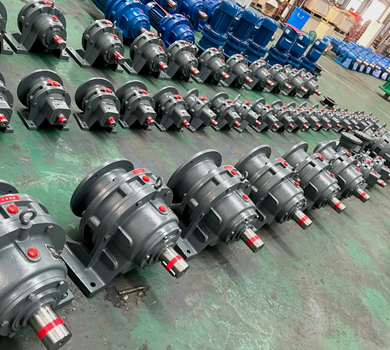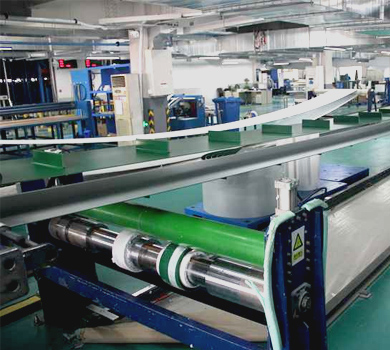Industry Challenges and Pain Points Analysis
The home appliance metal housing welding unit is a critical component in modern industrial automation. These systems typically integrate robotic arms, welding guns, positioning systems, and control units, and are widely used in the production of refrigerators, washing machines, and other high-volume metal housing products. The growing trend toward high-speed, high-precision, and flexible production lines has intensified the demand for advanced transmission solutions in such environments.
However, the industry faces several persistent challenges:
- Transmission System Reliability: Frequent high-torque movements and repetitive operation cycles require robust and long-lasting gear reducers.
- Structural Compactness: Limited space within production cells demands gearboxes with high power density and minimal footprint.
- Energy Efficiency: Continuous operation increases energy consumption, which must be managed to maintain cost-effectiveness and environmental compliance.
- Environmental Adaptability: Dust, metal shavings, and high ambient temperatures in welding areas pose significant risks to gear reducer performance and lifespan.
- Maintenance Frequency: Downtime due to reducer failure is costly, requiring designs that minimize wear and maximize service intervals.
Key Role and Technical Requirements of Gear Reducers in This Industry
Gear reducers in robotic welding stations are crucial for achieving precise positioning and consistent torque delivery. They are often deployed in joint drives of robotic arms, where they must meet the following specifications:
- Torque Density: High torque output is required in a compact form for dynamic motion control.
- Transmission Accuracy: To maintain weld seam quality, gear reducers must provide high positioning accuracy, typically below 0.1 arcmin.
- Fast Response: High-speed operation and real-time adjustments demand excellent dynamic performance from the drive system.
- Compatibility: The reducers must be adaptable to various robotic arm brands and control architectures.
Additionally, the operating environment imposes hidden requirements on gear reducer design:
- High-temperature resistance (up to 80°C ambient temperature in some welding zones)
- IP65 or higher protection against dust and moisture
- Extended service life and reduced maintenance frequency
Waimica Bevel Gear Reducer Solution
Waimica’s bevel gear reducer series is specifically engineered for high-precision robotic welding applications. Our design philosophy focuses on balancing performance, compactness, and reliability to address the critical requirements of the industry.
Structural Design Highlights:
- Compact and Modular: Integrated housing design and modular mounting options reduce installation time and footprint.
- Adaptable Installation: Support for horizontal, vertical, and angular mounting orientations, ideal for robotic joints.
- Material and Surface Treatments: High-strength alloy steels and surface hardening treatments for extended wear resistance and durability.
Performance Specifications:
| Parameter | Waimica | Leading Brand A | Leading Brand B |
|---|---|---|---|
| Maximum Torque (N·m) | 500 | 480 | 520 |
| Backlash (Arcmin) | ≤0.1 | ≤1.0 | ≤0.2 |
| Efficiency (%) | 95.5 | 94.0 | 96.0 |
| Operating Temperature Range (°C) | -20 to +80 | -10 to +70 | -25 to +85 |
| Protection Rating (IP) | IP65 | IP64 | IP65 |
| Service Life (Hours) | ≥20,000 | ≥18,000 | ≥22,000 |
| Maintenance Interval (Hours) | 10,000 | 8,000 | 12,000 |
| Input Flange Type | ISO 9409-1 / ISO 10360 | Custom Flange Only | ISO 10360 |
Typical Application Scenario and Customer Feedback
A major home appliance manufacturer in Asia recently upgraded its welding cell from a traditional fixed-position welding system to a robotic welding station. The client required a high-precision, compact gear reducer to replace an aging model from a leading brand. Waimica’s technical team conducted a detailed site assessment, reviewed motion profiles, and performed FEA (Finite Element Analysis) simulations to recommend the most suitable bevel gear reducer for the specific application.
The selected model featured a modular housing design with ISO 10360 input flange and IP65 protection. It was customized for a peak torque of 500 N·m and an average operating temperature of 65°C. The integration with the client’s existing control system was seamless, and the reducer’s high stiffness and low backlash improved the robotic arm’s positioning accuracy by 40%.
Performance Improvement After Waimica Implementation:
| Metric | Before Waimica | After Waimica | Improvement |
|---|---|---|---|
| Positioning Accuracy (arcmin) | 0.2 | 0.1 | 50% improvement |
| Service Life (hours) | 16,000 | 20,000 | 25% increase |
| MTBF (Mean Time Between Failures) | 12,000 | 15,000 | 25% increase |
| Maintenance Intervals (hours) | 6,000 | 10,000 | 66% increase |
| Energy Efficiency (%) | 93 | 95.5 | 2.7% improvement |
Conclusion and Waimica Brand Value Summary
Waimica’s bevel gear reducer series demonstrates strong technical performance and long-term reliability in robotic welding environments. Our gear reducers deliver not only high torque density and precision but also exceptional environmental adaptability and reduced lifecycle costs.
As a high-value, high-performance transmission solution provider, Waimica offers a compelling alternative to traditional international brands with competitive pricing and fast, flexible delivery. Our ability to tailor solutions to specific operational requirements has positioned us as a trusted partner for manufacturers seeking to optimize their welding systems for speed, accuracy, and uptime.
With the increasing adoption of automation and smart manufacturing in the home appliance industry, Waimica is committed to driving innovation and providing scalable, future-ready transmission technologies. We are not just a supplier, but a strategic partner in the journey toward next-generation industrial production.









